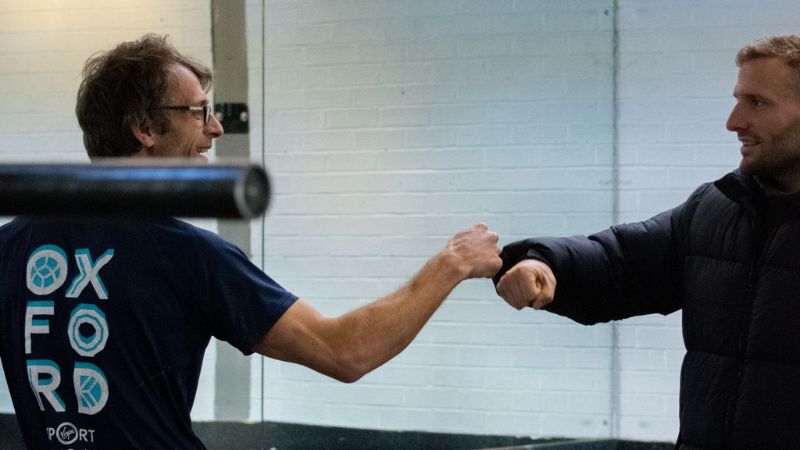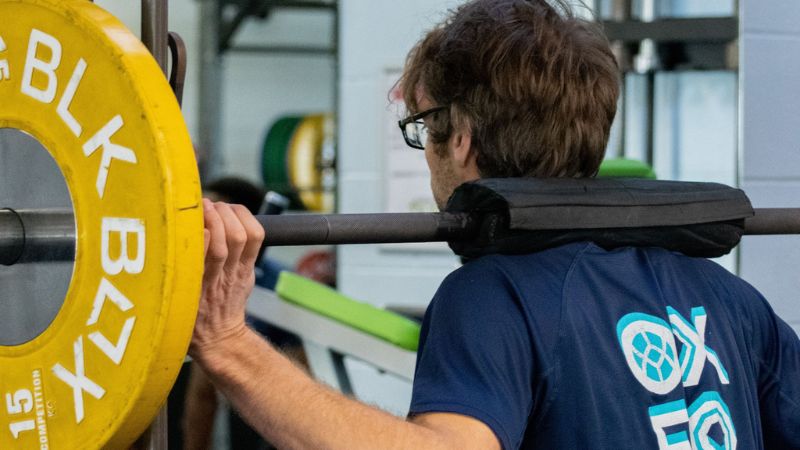You can follow Georg along on his battle to fight FA on his Instagram.
One year on, Going Anaerobic with Friedreich’s Ataxia

Part 3 of 3
I am not in sport science, I am not a medic; my doctorate is in history of architecture. As a specialist in ancient Greek and Roman architecture, I spend more time on archaeological excavations in the last 15 years than in a gym or rowing on the water. Finding myself in this situation is something I never imagined to be in and certainly something I never planned for. You’ve got to play with the cards you’ve got given, luckily for me that means all of them. Friedreich Ataxia (FA) does not affect cognition, sure, it makes it harder to access information as FA affects your ability to read and write, but the ability to process information remains intact. The more detail I got about the damage FA causes, the more curious I got. Trying to figure out how FA actually works, almost like an archaeological investigation, you only find a certain amount of artefacts, or fragments and it is down to you to piece it together to create a greater picture.
One question that triggered my interest was: Why so late? FA appears usually during teenage years, what did I do differently back then? The identification process started again, what else does FA do to toy with us? A part of FA is that it reduces the production of a specific protein that is essential to cellular energy production – reduces. What can we do to normalise the cellular energy output? At this point I have to repeat that I am an architect, my knowledge on cellular biology is of an amateur, not of a professional. Nevertheless, the part in our muscles responsible for energy production are the mitochondria. Generally referred to as the powerplant of the muscle. Clearly, if I found a way to activate these my cellular energy production will be enhanced.

As far as I know, there is a possibility to do so and when a friend told me about this, I was not happy, definitely not. The key to cellular energy production is cutting off the oxygen supply to them, driving the muscles to look for an alternative way to receive the energy the need. In this circumstance the mitochondria are forced to get into action and start producing the energy needed. Thus far the theory, in practice this means going anaerobic. Sessions of a high, extremely high intensity, short intervals of at least one minute, ideally longer, if you can hold it for longer. I did these as a kid, almost every other weekend at competitions. Usually we would simulate race mode at tests during training to see what you are made out of. f@#%. You would not do anything like it unless you are a professional athlete. Your muscles, legs in this case, fill with lactic acid up to the point of their maximum saturation and you still have to push on. In short: pain. So much pain that you might just pass out, or vomit - or both. I dreaded this thought, too present were the memories of my childhood. Cardiomyopathy came to my mind. I might just die. There is no chance for an untrained body to withstand this strain, how could a disabled body survive this? my heart might just give up. I understood that I had to try this, after all, this would be the only part of my childhood training I was not doing yet, for the obvious reason. But how? Heartrate targets are kind of irrelevant, it is about cutting the oxygen supply by pushing oneself way too hard anyway. My heartrate would be expected to surpass 180 bpm, closing in on dangerous frequency. Any attempt of doing this needed more time, I must not attempt too much too early, I am 41 years old, give me a break.
So far my main focus has been on strengthening the cardiovascular system, long sessions which are rather boring than intense. But every now and then I phase in intervals to mimic race conditions. Constantly watching my heart, feeling the pain of my youth again. In fact, muscular pain has become a constant in my life, being older does not help with the length of time needed for recovery. I cannot imagine a life in which I am either walking or without pain. This seems to be the price I have to pay for simply being born with FA, a rare genetic condition. Being able to walk is something you don’t even think about until you lost it, then it becomes precious. Like with so many things, you don’t value them until they are lost.
Want to learn more?
